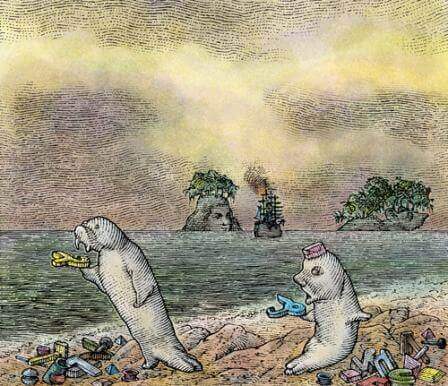Lewis Carroll: He Loved to Play with Language
Lewis Carroll loved to play with language and some of his most famous works included new words and language commentary.
Mignon Fogarty

Lewis Carroll was not only the author of Alice in Wonderland and other linguistically interesting books, but he was also a working mathematics professor at Christ Church College at Oxford under his real name Charles Dodgson.
In the dramatic comedy, Euclid and His Modern Rivals, one is said to be able to experience both Lewis Carroll the author and Charles Dodgson the mathematician because he employs literary techniques to make the argument that the modern mathematicians of his day are no better than Euclid. The story is set in Hell, where a mathematician named Minos has a discourse with a devil’s advocate named Professor Niemand.
In Carroll’s non-mathematical writings, you’ll find a number of inventive words and commentaries on language. One of my favorite parts of Through the Looking Glass is the following section, in which Carroll was likely the first person to use the word pretend to mean “children playing make believe.” (1) I also like it because Alice is having a usage argument with her sister about singulars and plurals.
“Kitty, dear, let’s pretend—’ And here I wish I could tell you half the things Alice used to say, beginning with her favorite phrase `Let’s pretend.’ She had had quite a long argument with her sister only the day before—all because Alice had begun with `Let’s pretend we’re kings and queens’; and her sister, who liked being very exact, had argued that they couldn’t, because there were only two of them, and Alice had been reduced at last to say, `Well, you can be one of them then, and I’ll be all the rest.’”
Kitty clearly doesn’t understand the concept behind “pretend.”
Alice also doesn’t hesitate to create new forms of words. Although she should have said things were becoming “more curious,” she is, of course, well known for saying things were becoming “curiouser and curiouser.”
Besides assigning new meanings to words and making words take new forms, Carroll also liked to invent words. Jabberwocky, for example, is a nonsense poem that first appeared in Through the Looking Glass. That it’s a nonsense poem means that it contains a lot of made up words such as mimsy and galumphing. And yet even though many of the words are nonsense, the writing is still grammatical. Here are the first four lines so you can see what I mean:
‘Twas brillig, and the slithy toves
Did gyre and gimble in the wabe;
All mimsy were the borogoves,
And the mome raths outgrabe.
In the book, Humpty Dumpty explains what some of the words mean, for example, he says,
“Brillig means four o’clock in the afternoon—the time when you begin broiling things for dinner.
And, slithy means ‘lithe and slimy’. Lithe is the same as ‘active’.”
And then Humpty Dumpty goes on to explain how these words were made by blending other words together, and his explanation created the name that we often use to describe this kind of word today: a portmanteau word. Humpty Dumpty invokes the name for a suitcase with two parts. He says, “You see it’s like a portmanteau—there are two meanings packed up into one word.”
Humpty Dumpty also opines on the temperament of parts of speech. He says, “They’ve a temper, some of them—particularly verbs, they’re the proudest—adjectives you can do anything with, but not verbs—however, I can manage the whole lot!”
Carroll also wrote the nonsense poem The Hunting of the Snark, which uses nonsense words and contains other linguistic whimsy, for example, all the members of the crew have names that begin with the letter B.
We mostly remember Lewis Carroll as a wonderful storyteller, but he loved to play with language too.
References
-
1. “pretend, v. trans.” Oxford English Dictionary, online edition.
https://j.mp/1ILGS13
(subscription required. accessed May 20, 2015).
Image via Will (ajourneyroundmyskull) at Flickr. CC BY 2.0

